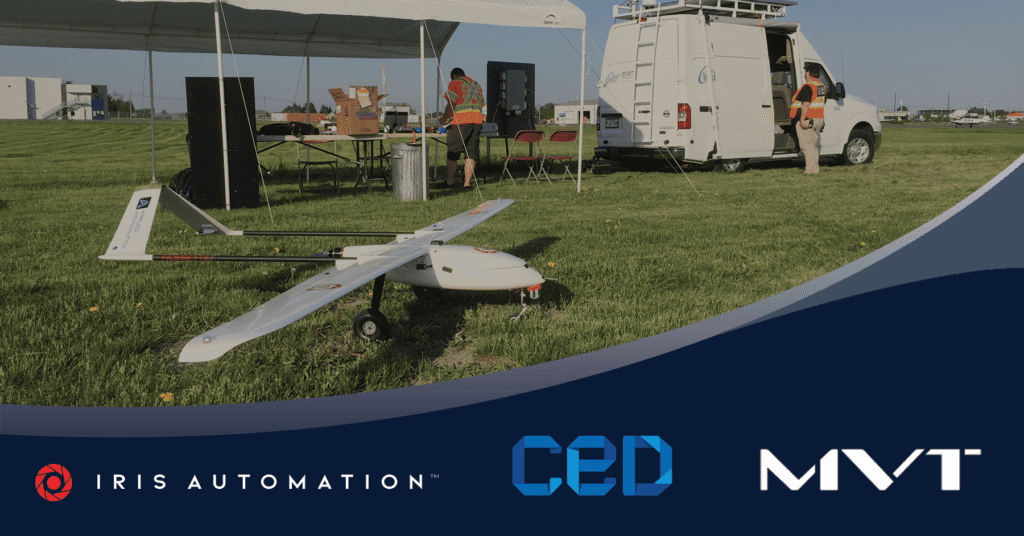
Transport Canada will be using an unmanned aircraft system (UAS) to fly a beyond visual line of sight (BVLOS) flight to conduct linear power line inspections using onboard detect-and-avoid (DAA) technology. (Iris Automation)
MVT Geo-solutions has received approval from Transport Canada to fly unmanned aircraft systems (UAS) beyond visual line of sight (BVLOS) flight in uncontrolled airspace in Alma, Quebec.
The Special Flight Operations Certificate (SFOC) granted to MVT by Transport Canada will be only the second BVLOS waiver issued to operate in Canadian airspace and the first such waiver in Quebec. The SFOC will open the door for more complex flights in the future.
“Obtaining this SFOC is a first in Quebec,” Alain Fortin, President of the UAS Center of Excellence, said in a press statement. “As a Canadian pioneer in the civil and commercial RPAS industry, Alma’s CED is proud to have contributed to the development of technologies and skills that speed up the advent of safe and well-integrated BVLOS flight in Canadian airspace.”
MVT Geo-solutions, a geo-environmental and geo-technical contractor, Iris Automation, a safety avionics technology company, and UAS Center of Excellence (CED Alma) will be partnering under this SFOC to operate the flights. The BVLOS operations will conduct linear power line inspections, enabled by detect-and-avoid (DAA) technology supplied by Iris, Sean Deverey, the company’s director of government affairs told Avionics International in an email.

The Casia Long Range Detect-and-Avoid system will be used on the UAS BVLOS flight. (Iris Automation)
Iris’ DAA system, Casia, provides commercial drones with automated collision avoidance maneuvers that is essential for BVLOS flights. Unlike other DAA technology, Casia does not use ground-based radars or visual observers. It has been approved twice by the Federal Aviation Administration (FAA) in the United States for BVLOS FAA-sanctioned flights.
“Iris Automation’s Casia is the first onboard DAA solution to safely enable commercial BVLOS operations for unmanned aircraft systems, Devery said. “The system allows a UAS to see and react to the aviation environment around the aircraft. Casia detects other aircraft, uses computer-vision algorithms to classify them, makes intelligent decisions about the threat they may pose to the drone, and then triggers an alert to the pilot in command and automates maneuvers to safely avoid collisions.”
Flight missions that come from the SFOC will lead to more complex missions in the future such as infrastructure inspection, mining, mapping, agriculture, emergency response, and package delivery.
“This permission further demonstrates how the Casia onboard detect-and-avoid system is helping to advance the safety case for drone usage while simultaneously expanding the envelope of drone-related use cases,” Jon Damush, CEO of Iris Automation, said in a press statement. “Drones offer tremendous promise in terms of safety and economics as compared to piloted aviation alternatives, but we must integrate them into the airspace safely. Seeing and avoiding other aircraft is paramount to that safety, and steps like this are key to unlocking the promise of drones.”